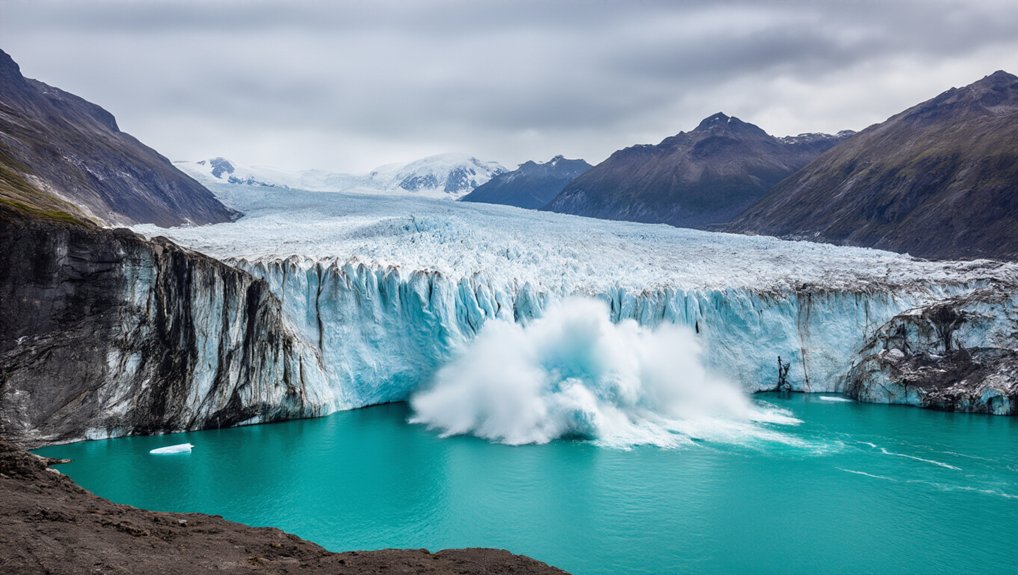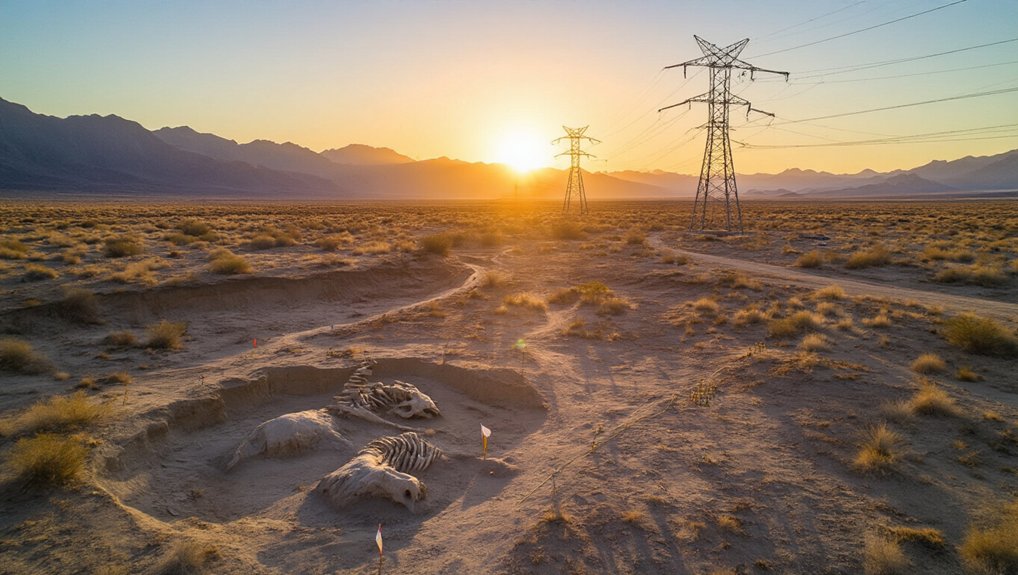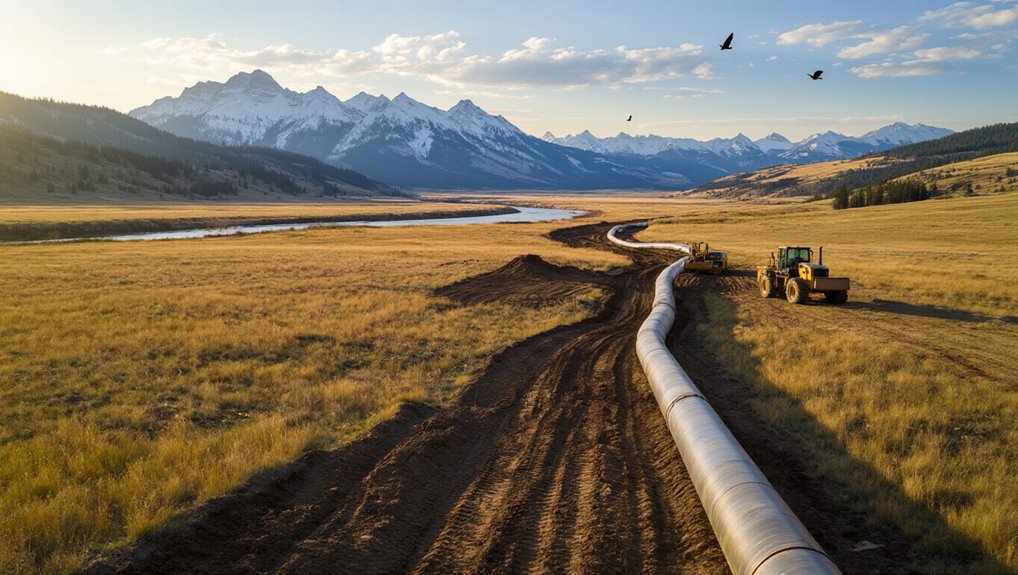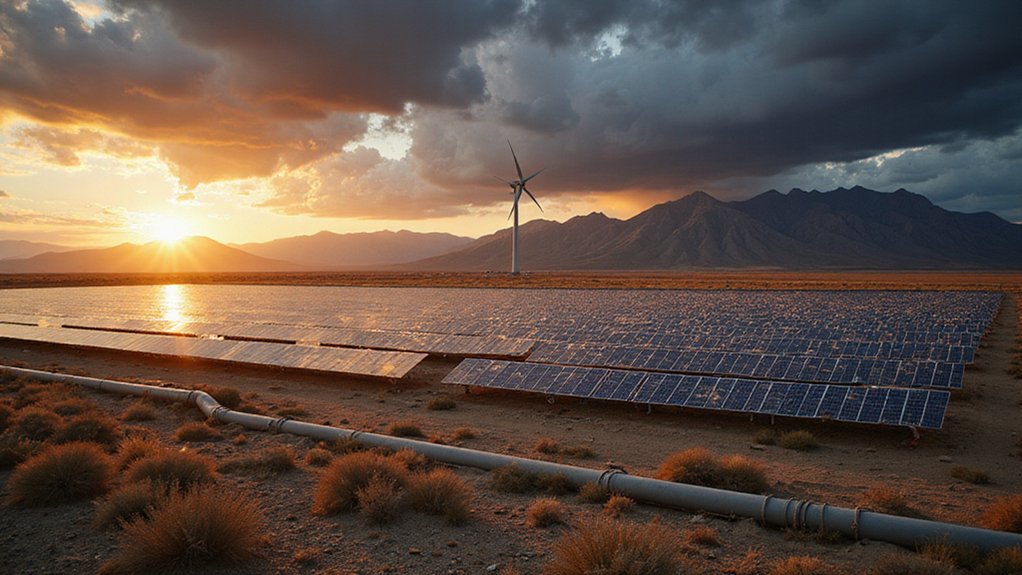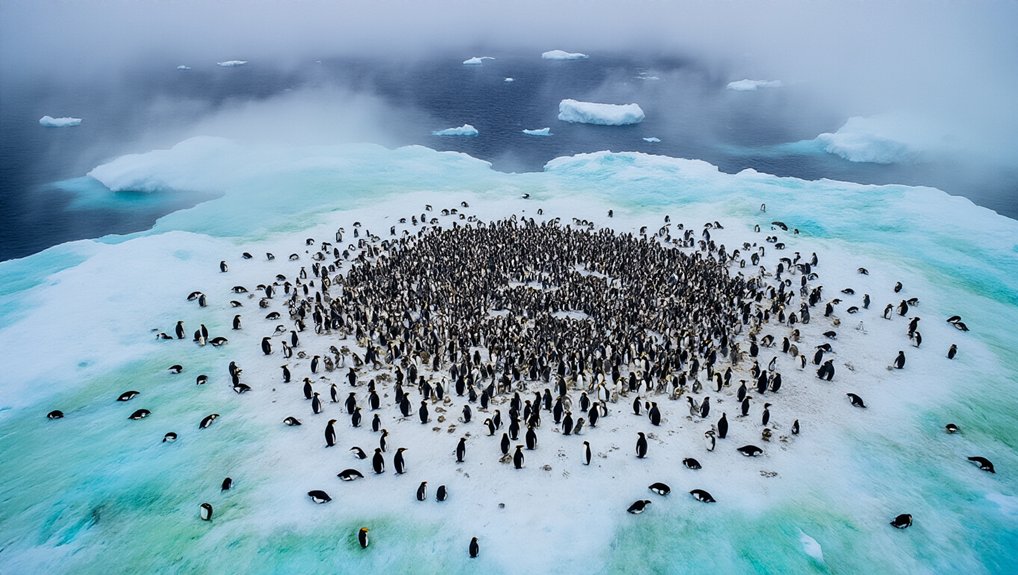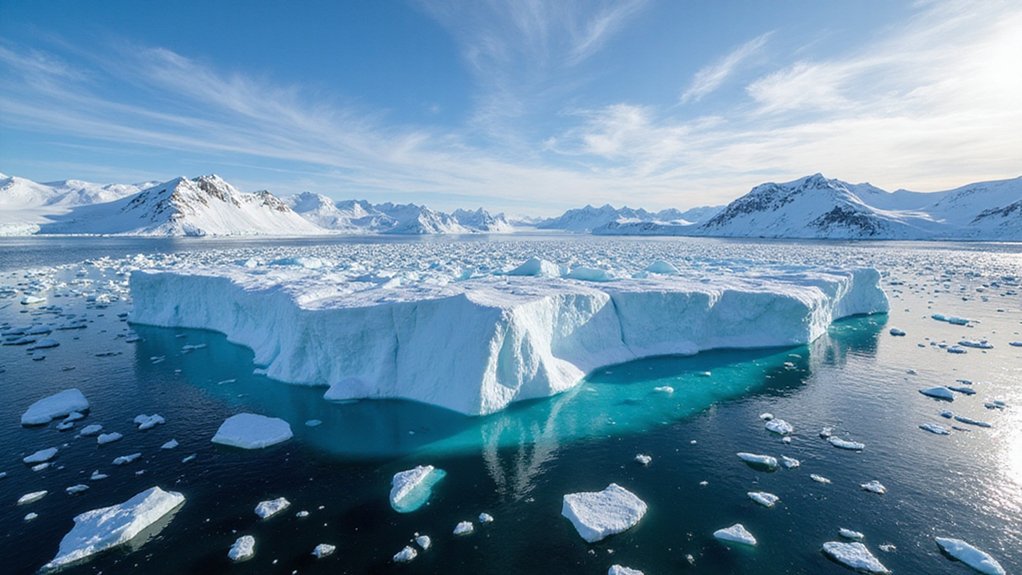Why are the world’s glaciers melting faster than ever? Simple answer: the planet’s running a fever, and ice doesn’t like heat. The numbers are staggering. Earth’s glaciers dumped 273 billion tons of ice annually from 2000 to 2023. That’s billion with a B. Last year alone? A whopping 80 billion metric tons more than any previous year on record.
The acceleration is brutal. We’ve gone from losing less than 100 gigatons yearly in the early 2000s to over 500 gigatons recently. The 2010s saw melting rates hit -889 mm per year, compared to -171 mm in the 1980s. That’s not just bad. That’s catastrophic.
We’ve gone from losing less than 100 gigatons yearly to over 500 gigatons recently.
Here’s the kicker: many glaciers have already crossed the point of no return. They’re done. Toast. Even if humanity suddenly discovered collective wisdom and stopped all emissions tomorrow, these ice giants won’t recover for centuries, maybe millennia. Some are simply doomed beyond salvation. No amount of wishful thinking changes that. Since 1975, glaciers have hemorrhaged over 9,000 billion tons of ice – imagine a frozen cube the size of a small country, completely vanished.
Two billion people depend on glacier meltwater. Let that sink in. Their drinking water, irrigation systems, and hydropower all rely on these disappearing ice masses. Current CO2 levels at 421 parts per million, the highest in 2 million years, lock in further melting regardless of immediate action. When temperatures rise between 1.5 and 4 degrees Celsius, glaciers will lose up to 41% of their 2015 mass by 2100. Summer river flows will tank. Agriculture will suffer. Ecosystems will collapse.
The evidence screams from every mountain range. We’ve had 37 consecutive years of net ice loss. Reference glaciers have shed the equivalent of 27.3 meters of water since 1970. That’s about 98 feet of surface ice per glacier, gone forever. The Alps, Andes, Himalayas, Rockies – they’re all retreating. Fast. The human cost is already visible – in July 2022, seven Alpine climbers died when a glacial avalanche struck, triggered by rapid melting from warming temperatures.
Small glaciers at lower elevations? They’re vanishing first. Tropical glaciers might disappear entirely within decades. Meanwhile, melting ice feeds rising seas, threatens cold-adapted species, and creates new flood hazards from unstable glacial lakes.
The world’s glaciers aren’t just melting. They’re racing toward extinction, taking water security and entire ecosystems with them. The point of no return? We’ve already passed it for many. The question now is how many more we’re willing to lose.
References
- https://wmo.int/news/media-centre/glacier-melt-will-unleash-avalanche-of-cascading-impacts
- https://www.climate.gov/news-features/understanding-climate/climate-change-mountain-glaciers
- https://www.wsws.org/en/articles/2025/03/27/yhai-m27.html
- https://www.carbonbrief.org/glacier-melt-threatens-water-supplies-for-two-billion-people-un-warns/
- https://www.nhm.ac.uk/discover/news/2025/may/glaciers-could-take-centuries-recover-from-climate-change-overshoot.html
